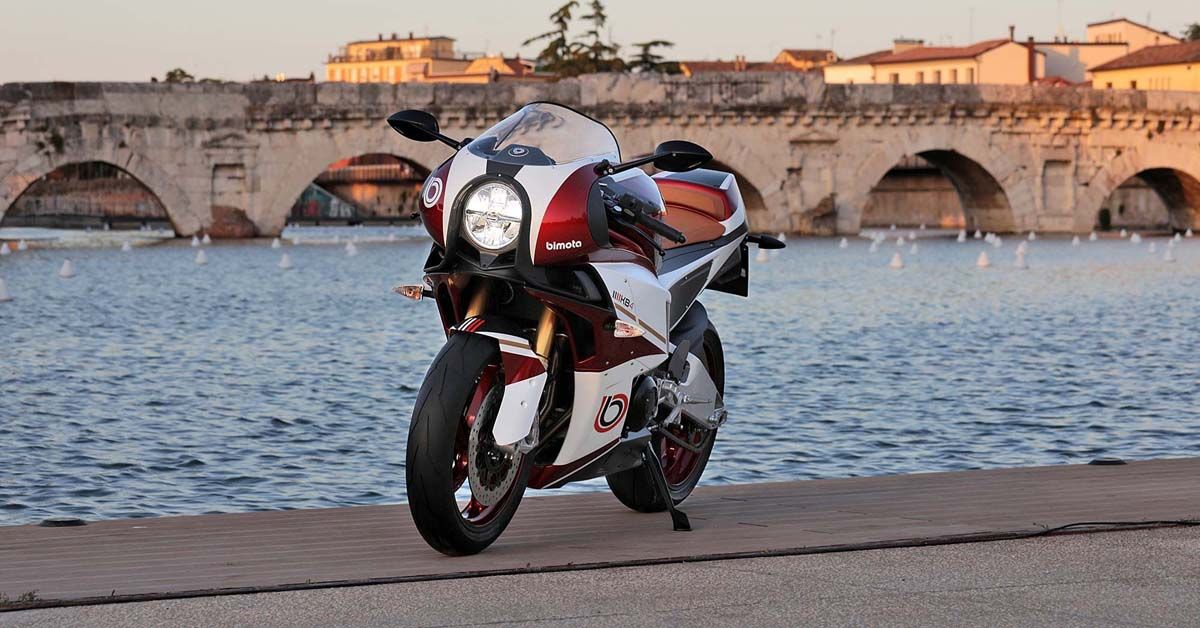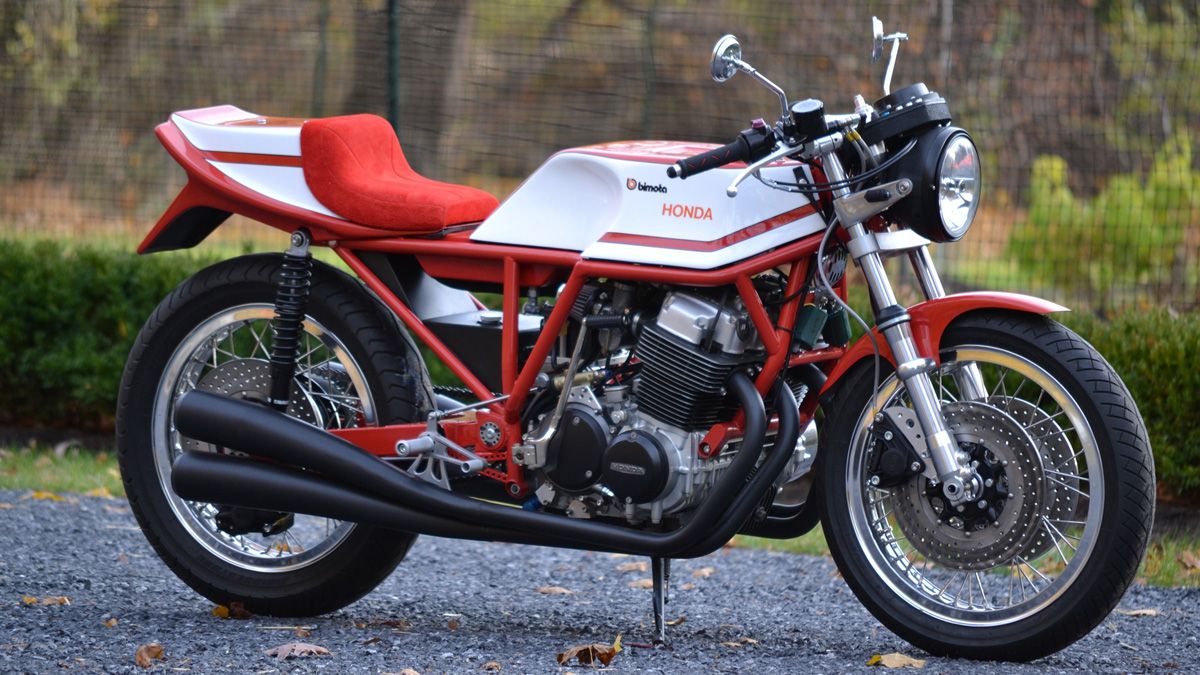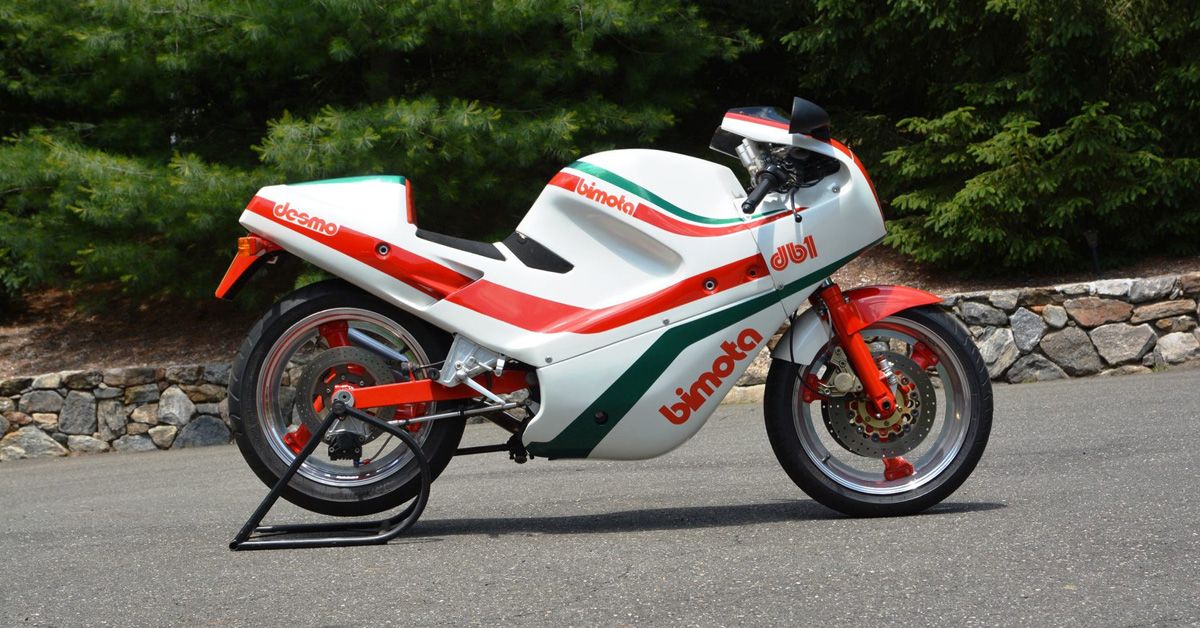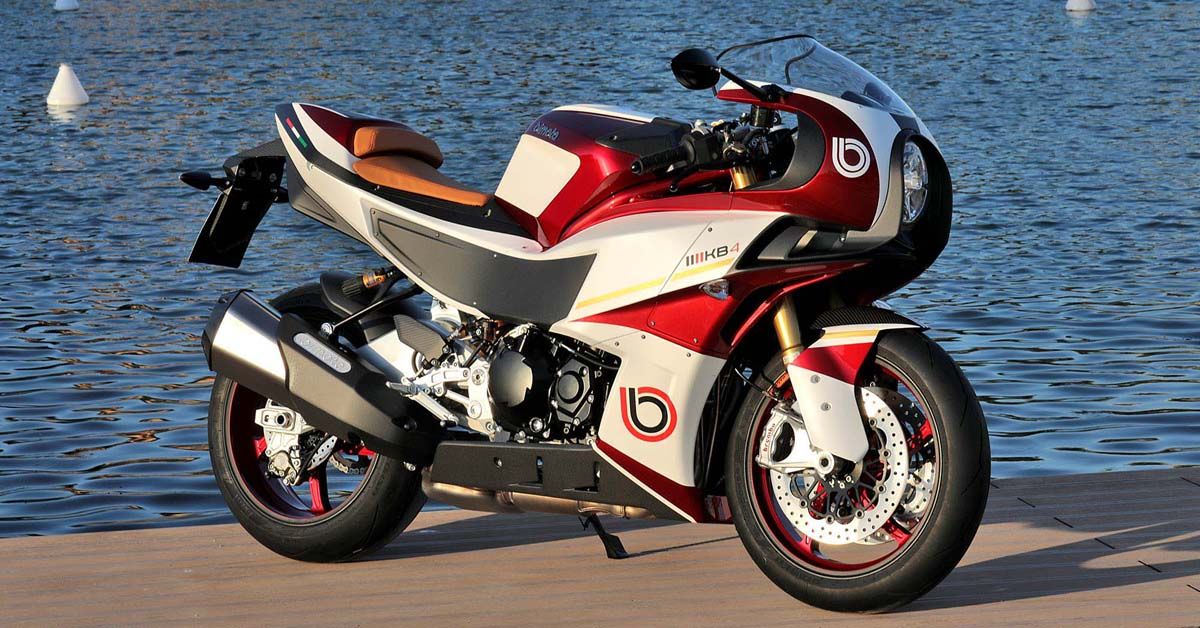The history of Bimota, now partially owned by Kawasaki, is not a long one. Since the company was founded rather recently, in 1973, its history is being made as we watch from the sidelines, as admirers or owners of these Italian bikes.
The name of the company comes from the first two letters of the names of the founders, Bianchi, Morri, and Tamburini; presumably in alphabetic order. Bimota’s first notable motorcycle was the SB2, and it came powered by a Suzuki engine and was technically a disguised GS750. In the beginning, Bimota customized top models of Suzuki as well as Honda and Kawasaki. Later, they moved to build motorcycles branded as Lamborghinis and handled high-end customizations of Yamaha and Ducati as well.
Along with launching high-performance models, Bimota even got into kit bikes for those who loved to make their motorcycles. When it comes to model names, it’s easy to see the origins. Only actual Bimota-manufactured bikes are labeled V Due or Tesi, the rest start with the same initial as the base motorcycle company. So Yamaha engine models are named with a “Y”, Honda models with an “H” while Harley-Davidson models get a to start with “HD”.
So what is truly going on with Bimota, today, after a rather tumultuous few years?
The Rise Of Bimota
Bianchi, Morri, and Tamburini were three friends who dealt with air-conditioning and insulation/heating equipment. All three loved motorcycles, especially Tamburini who raced as well. It is said that Tamburini was riding a Honda 750 Four at the Misano Circuit in 1972. He lost control at the Quercia, the fastest turn at Misano, and was back home with three broken ribs. Furious, Tamburini designed a new frameset for the Honda 750 Four, and this became the HB1, 50kilos lighter than the original.
Under Massimo Tamburini, Bimota made frame-sets as well as other components and accessories thereby transforming normal bikes into legend. Like the Honda 750 Four turned into the HB1, the Kawasaki Z1 900 was now the KB1 and finally, the Suzuki GSX 750 and 1100 were made into the SB2 and SB3.
But by 1983, Tamburini left Bimota. He was then replaced by a former Ducati engineer, Federico Martini.
Bimota Goes Even Higher With Brands Before The Fall
Martini, despite being younger and with less experience than Tamburini was able to make two Bimota bestsellers, altering a Ducati and a Yamaha into the DB1 and the YB4. By now, production had doubled as well, to 1,200 bikes per year.
By the ‘90s, the Japanese had wizened up and their frame quality was getting closer to what Bimota did. Bimota then launched the Tesi project, turning V4 Hondas, 5-valve Yamahas, and Ducati 851/904 engines into motorcycles with way better frames. Sadly, the Tesi came a little too late and did not turn out as Bimota thought it would.
By now, Franco Morini was involved as well, and Bimota tried to make its first motorcycle, the 500 V2 but the engine had a troublesome injection system. This and other financial troubles made Bimota file for bankruptcy in 2001. Later, after money was pumped in by Milanese investor Roberto Comini, Bimota rose from the ashes, under Sergio Robbiano. Robbiano focused on Ducati and made the DB5 and the DB6 Delirio, and also gave Tesi a rebirth. The last of the models was the DB7, post which the company was sold to the Swiss, Daniele Longoni, and Marco Chiancianesi. Under them, Bimota launched the fastest motorcycle yet, the BB3, powered by BMW’s S1000RR. But even so, Bimota floundered till finally, it exchanged hands, or rather shares once again.
In October 2019, Kawasaki purchased a 49% stake in Bimota and announced that the new Bimota motorcycles will be made from parts from the Kawasaki supply chain.
Racing Legacy & New Direction
In 1980, Jon Ekerold raced his Bimota HB3 into winning the 350 World Championship, much to Bimota’s surprise. Then Virginio Ferrari won the 1987 Formula TT along with Davide Tardozzi, on a YB4 El. In 2000, Anthony Gobert won a wet race at Philip Island riding a Bimota SB8K. More wins also happened, enough to tell the world that even unsponsored, Bimota motorcycles were the real thing.
And now, Bimota is off in a new direction with Kawasaki at the helm. 2021’s EICMA show in Milan saw the launch of the Bimota KB4 series, and it came well lauded. But for Pierluigi Marconi, CEO of Bimota, the sky is the limit. While Bimota has always focused on sportbikes, now they want to do adventure motorcycles and even tourers. The Tesi ADV has been offered as a teaser, although for now, it’s just a rendering.
But for the first time, Bimota has a steady supply chain. So it no longer has to bother about where the engines are coming from, something it not only struggled with but also caused its eventual bankruptcy.
So it’s an exciting new chapter in Bimota’s history and one we cannot wait to witness.
Sources: MotoType, Bimota, CanadaMotoGuide, Asphalt&Rubber




